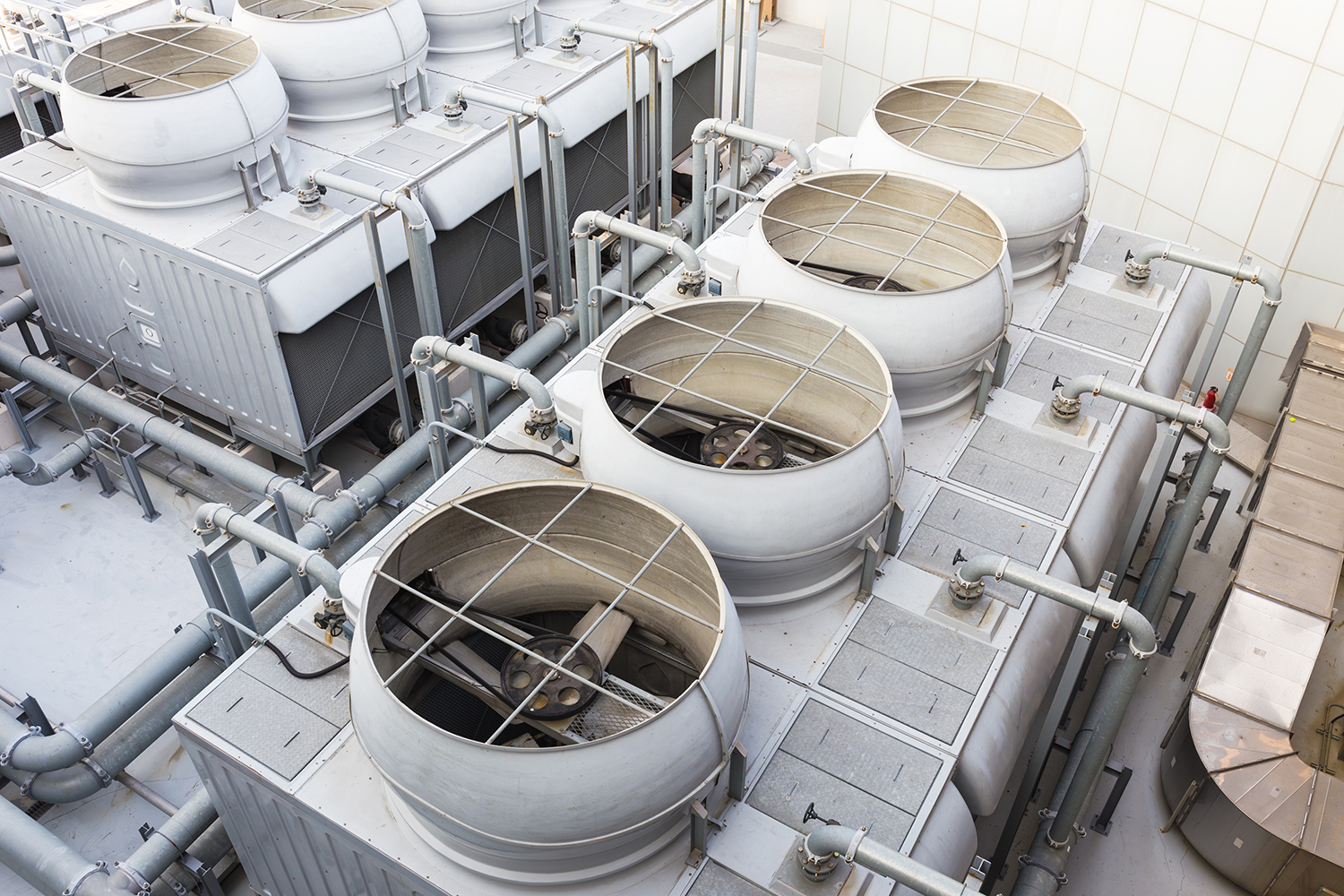Safely Operating Cooling Towers in Cold Weather

While the Southeastern United States isn’t known for its cold winters, there are times where that temperature dips below freezing in certain parts in winter. When it comes to cooling towers, manufacturers tend to design most of them to operate in all types of climates. However, subfreezing temperatures, even for a short time, mean certain precautions need to be put in place for those towers to function safely and efficiently. As we head into fall, it’s crucial to start thinking about those precautions. Doing so ensures that this winter, your cooling tower doesn’t have issues should temperatures fall.
Risk to Cooling Towers in Winter
The biggest additional risk associated with cooling towers in the wintertime is the potential for freezing of the water within the tower. In freezing temperatures, the water turns to ice – which can significantly impact the effectiveness cooling towers have in the evaporation process. Preventing and/or managing ice formation is crucial when cooling towers are exposed to the elements in cold climates. Even a day or two of freezing temperatures can have disastrous consequences on the functioning and health of a tower.
Considerations when Choosing a Cooling Tower Configuration
When choosing the right cooling tower for a specific location, there are several factors to consider if at any point, temperatures in that area dip below freezing. The first is whether to install a counterflow or crossflow cooling tower. The main difference between the two options is the direction in which air travels through the fill in relation to the flow of water. In crossflow towers, air travels horizontally as water flows downward. In counterflow towers, air travels vertically upward as water flows downward.
So which design is best when towers see temperatures below freezing? In most cases, counterflow towers are better equipped to handle winter temperatures. The heat transfer media (fill) in this design is completely enclosed. So, it is sheltered from harsh outside temperatures. Also, the temperature gradient in these towers is more even than in their crossflow counterparts. So, water cools at a steady rate, and no parts of the gradient reach below-freezing.
When it comes to forced draft vs. induced draft, the case can also be made that when dealing with freezing temperatures – an induced draft is your best option. These towers can initiate a de-icing process when temperatures hit below zero and ice begins to form. Doing so runs the axial fan in the reverse direction for short periods.
Precautions When Operating Cooling Towers in Subfreezing Temperatures
No matter the type of cooling tower installed, there are several strategies that owners can take to ensure they protect their units during cold temperatures. The first tactic is simple – closely monitor the tower during periods of below-freezing temperatures. Even with units that function via automated controls, having the eye of a human regularly on it can mean detecting issues before they escalate and affect tower operation.
Keeping the water flow rate within the tower at least above the design minimum is another smart strategy. Doing so creates an even water distribution throughout the fill media and prevents areas with less water from freezing more rapidly.
Equipping towers with VFDs (variable frequency drives) rather than fan cycling can also reduce the risk of water freezing. When fans are off in cells (as is the case when using fan cycling), temperatures in those cells can decrease quickly to below freezing. VFDs help to prevent any freezing and thus maintain a functioning tower.
Likely, the most beneficial strategy to preventing cold weather issues with cooling towers is maintaining a heat load at all times. Not doing so means that water within the unit begins to equalize with the wet-bulb temperature. Once this happens, ice begins to form which as it builds – prevents adequate airflow and can even damage the tower’s fill.
Creating a Plan Can Mean Preventing Long-Term Damage and Inefficiency in your Cooling Tower
The first step in preventing damage to a cooling tower in harsh weather conditions is learning about the unit, how it functions, and proper operating procedures for all times of the year. Knowing what changes to implement during times of freezing temperatures can mean keeping your tower functioning efficiently as well as preventing any damage that could significantly affect the lifespan of the unit.
Becoming a cooling tower expert doesn’t happen overnight. There are many nuances around how towers operate – and best practices differ depending on the type of tower, build material, climate, installation location, and a variety of other factors. While learning about cooling towers may seem overwhelming, it doesn’t have to be. The best way to do so is to consult with a team of experienced professionals in the industry. At Cooling Tower Experts, we’ve built a team of industry experts who each bring years of experience in cooling tower design, installation, and maintenance.
We offer full-service assistance along with customized training for your team members on the proper way to maintain your cooling towers year after year. We come on-site to explain the inner workings of your specific tower configuration. Whether you need help with installation, maintenance, or training on tower operations, we are here to help. Contact us today to get started.